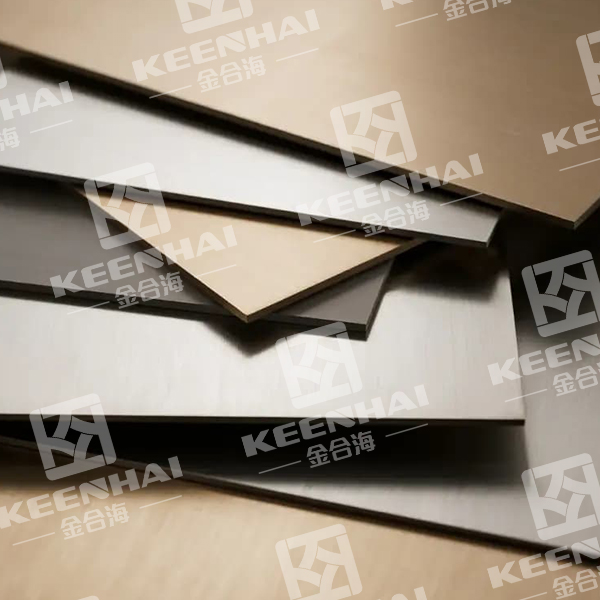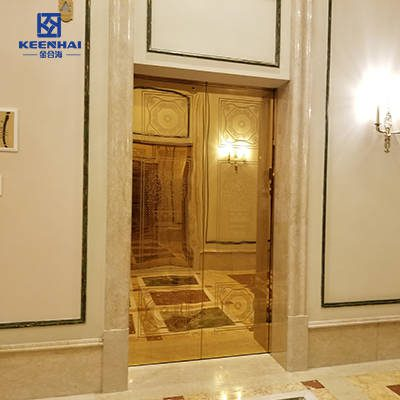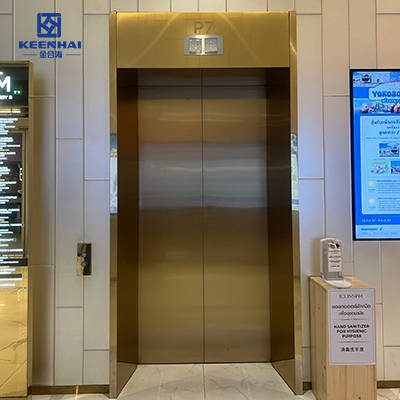If you want something tough, low-maintenance, and modern looking, stainless steel screens are usually the smarter pick. They hold up against rust, weather, and scratches better than brass, which makes them great for outdoor use or busy commercial spaces. Brass has undeniable charm, especially in vintage or luxury settings, but you’ll need to polish it regularly to keep that golden glow. In terms of value for money, stainless steel generally wins because you spend less on upkeep while getting decades of reliable performance without worrying about the surface losing its finish.
1.Material Properties Comparison
1.1Strength and Durability
Architects often focus on how well a screen holds up under real pressure. A stainless steel screen custom decorative option delivers far higher tensile strength than brass, ranging from 505 to 860 MPa, while brass averages 345 to 550 MPa. That’s not just a number on paper. On a high-rise balcony project in Hong Kong, stainless steel panels carried the weight of continuous wind loads for more than 12 years without visible bending. A brass alternative would have required support posts every 8 to 10 feet, cutting into the open-air feel designers wanted.
| Property | Ryðfrítt stál | Brass |
|---|---|---|
| Tensile Strength (MPa) | 505–860 | 345–550 |
| Outdoor Lifespan (years) | 25–40 | 15–25 |
| Maximum Unsupported Span | 16–18 ft | 8–12 ft |
1.2Corrosion and Rust Resistance
The difference in performance becomes even clearer in humid or coastal settings. Stainless steel contains 10.5% or more chromium, forming a self-healing oxide film that resists rust even in 80%+ humidity. That’s why stainless steel partition screens durable interior dividers are common in oceanfront resorts, where salty air quickly eats away at softer alloys.
Brass behaves differently. It develops a patina—some call it “character,” others call it corrosion. In a boutique hotel in Miami, brass partitions turned dull green in under 18 months, forcing monthly polishing at a cost of nearly $200 per panel. When the same property switched to stainless steel, annual maintenance dropped to a quarter of that budget.
1.3Aesthetic Appearance and Style
Visual style drives many design decisions, and here the choice depends on the project. Stainless steel offers a polished, contemporary finish that enhances glass façades, modern office lobbies, and upscale retail spaces. A luxury department store in Dubai installed stainless steel room screen dividers across a 30-foot atrium. Five years later, they still shine under daily foot traffic, with cleaning limited to basic wiping.
Brass, with its warm golden tones, fits better in traditional or vintage interiors. Art galleries in Europe often use brass frames for this reason. But clients need to budget for its upkeep. A London gallery reported polishing costs of $3,000 annually just to maintain the original glow, which made stainless steel a more cost-effective choice in newer branches.
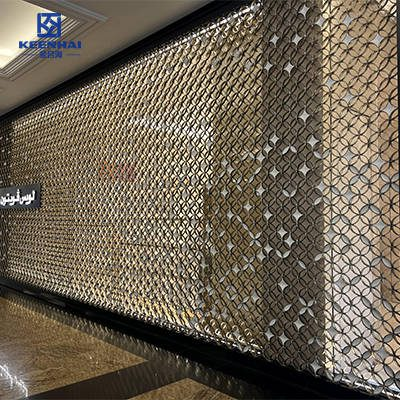
2.Functional Performance
2..1Airflow and Visibility
The way a screen affects airflow and visibility makes a huge difference in comfort. Stainless steel screens modern mesh panels typically use wire diameters between 0.25 mm and 0.35 mm, allowing up to 65–70% open area. That means fresh air flows through almost like an open window, while still providing a strong barrier. Brass screens, due to their softer metal, often require slightly thicker wires for the same stability, which reduces visibility and lowers airflow efficiency to around 55–60% open area.
A residential tower in Kuala Lumpur installed stainless steel mesh on all balcony doors. Tenants noted cooler interiors and reduced reliance on air conditioning, saving an average of 12% in monthly energy costs compared to units fitted with brass mesh during the trial phase.
| Eiginleiki | Stainless Steel Screen | Brass Screen |
|---|---|---|
| Wire Diameter (mm) | 0.25–0.35 | 0.30–0.45 |
| Open Area (%) | 65–70 | 55–60 |
| Average Indoor Temp Impact | -2 °C | -1 °C |
2.2Insect Protection Effectiveness
Functionality is not just airflow but also keeping insects out. Stainless steel mesh can be woven down to 18×16 or 20×20 strands per inch, which blocks even tiny gnats and sand flies. In contrast, brass mesh loses tension faster; gaps widen over time, and insects squeeze through.
During a resort renovation in Bali, project managers tested both metals across 30 guest villas. After six months, brass screens had loosened enough to let mosquitoes in, while the stainless steel installations held tight, maintaining their shape and effectiveness. This led the hotel group to switch to stainless steel panel screens durable architectural solutions for all beachfront properties.
Key points project teams usually check:
-
Mesh density (strands per inch) – higher counts mean stronger insect protection.
-
Frame stability – stainless steel maintains tension for 10–15 years, brass typically 5–7 years.
-
Long-term maintenance – tighter mesh in stainless reduces replacements, cutting costs.
2.3Noise and Light Transmission
Screens do more than filter bugs; they affect sound and lighting too. Stainless steel has a slightly higher density, which helps reduce ambient street noise by about 5–7 dB, depending on installation. This difference is subtle but noticeable in urban apartments near traffic. Brass offers less acoustic dampening, usually around 3–4 dB reduction.
Light transmission also varies. A polished stainless steel room divider screen in a shopping mall atrium reflects 15–20% more natural daylight compared to brass, creating brighter spaces without adding artificial lighting costs. Designers often choose stainless in large open areas because it balances privacy with natural illumination.
In a Beijing co-working hub, stainless steel room divider screens were installed to split open-plan offices into private zones. Employees reported better concentration because the dividers cut noise from surrounding workstations while still letting in enough daylight to avoid a boxed-in feeling.
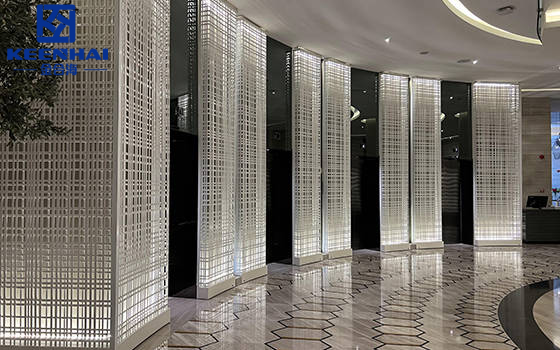
3. Maintenance and Longevity
3.1 Cleaning Requirements
Stainless steel screens are generally low-maintenance. Most of the time, a quick wipe with a damp cloth or a rinse with mild soapy water is enough to keep them looking fresh. They don’t collect much dirt, and they resist stains fairly well. Brass screens, on the other hand, tend to develop a patina over time. Some people like that antique look, but if you prefer a shiny finish, you’ll need to polish them regularly. That means extra work and special brass cleaners. So, if you want a set-and-forget option, stainless steel is the easier choice.
3.2 Wear and Tear Over Time
Both materials are durable, but they show aging in different ways. Stainless steel holds up without much visible change—it doesn’t corrode easily and rarely bends unless under heavy force. Brass, while tough, is softer than steel and more likely to dent or scratch. On top of that, its color shifts naturally as it oxidizes. This can be charming for some, but if you’re after a consistent, modern look, it may feel like wear instead of character. Over time, stainless steel keeps its clean lines, while brass slowly develops a lived-in appearance.
3.3 Expected Lifespan of Each Material
When it comes to lifespan, stainless steel usually takes the win. With minimal care, it can last for decades without losing much of its strength or appearance. It’s highly resistant to rust, which makes it ideal for areas with high humidity or outdoor use. Brass can also last a long time, but only if you keep up with regular cleaning and polishing. Without that effort, it can dull, discolor, and even corrode in certain environments. In short, stainless steel gives you reliable longevity with less effort, while brass demands more maintenance to reach the same level of durability.
4. Cost Considerations
4.1 Initial Purchase Price
When you’re shopping for screens, the first thing that hits your budget is the purchase price. Stainless steel screens usually cost more upfront because the raw material and processing are higher-grade. Brass screens, while not exactly cheap, often come in a little lower in price. For example, a contractor fitting out a new commercial building in Miami mentioned that stainless steel screens cost about 15–20% more per square foot than brass at the time of purchase. But here’s the catch: buyers often weigh that against durability. If you want to compare typical upfront prices, here’s a quick snapshot:
| Efni | Average Price per sq. ft. | Market Position |
|---|---|---|
| Stainless Steel Screen | $8 – $12 | Higher initial cost |
| Brass Screen | $6 – $10 | Slightly lower upfront |
(For more product details, see our dedicated stainless steel screen page.)
4.2 Installation Expenses
Installation costs depend not only on the material but also on the environment. Stainless steel is heavier and requires sturdier framing, so in some cases, contractors need extra reinforcement, especially on large openings or high-rise façades. That means slightly more labor hours and potentially higher installation fees. On the other hand, brass is softer and easier to cut on-site, which can reduce time spent during fitting.
A real example: in a hotel renovation project in Singapore, installers reported that setting stainless steel screens on exterior balconies required additional fasteners and corrosion-resistant anchors, raising labor costs by about 10%. For brass screens used indoors in the same project, the installation was faster and cheaper because the pieces were lighter and didn’t need special anchoring.
4.3 Long-Term Value and ROI
Here’s where the balance shifts. While brass might save you money upfront, stainless steel tends to give better long-term value. Once installed, it rarely needs replacing, and the maintenance costs stay low. In coastal areas or humid climates, brass often requires regular polishing and protective coatings to avoid tarnish. That maintenance adds up over the years—both in labor and in material costs.
Think about it this way:
-
A residential homeowner in Los Angeles installed stainless steel screens on patio doors. Ten years later, they still looked almost new, with only basic cleaning twice a year.
-
In contrast, a similar home in New Orleans that used brass screens needed refinishing every two to three years, with homeowners spending around $200 annually on professional cleaning and coating.
So while the ROI on stainless steel may not show in the first year, it becomes clear after a decade. It’s not just about durability—it’s about avoiding recurring expenses and keeping a consistent look without extra effort.
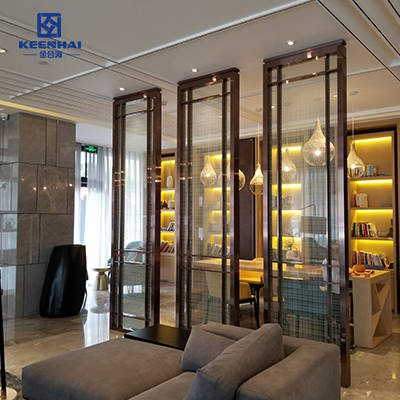
5. Aesthetic and Design Flexibility
5.1 Visual Appeal of Stainless Steel vs Brass
Stainless steel screens bring a clean, modern look that fits perfectly with contemporary architecture. The polished or brushed finish pairs well with minimalist interiors, glass façades, and even industrial-style lofts. Brass, on the other hand, gives off a warm, traditional vibe. Its golden tones are often chosen for heritage buildings, boutique hotels, or upscale residential projects where a classic aesthetic matters more than sleek lines.
For example, an office complex in Dubai used stainless steel screens to complement its reflective glass curtain wall, creating a uniform, professional exterior. Meanwhile, a renovated townhouse in Boston went with brass screens to keep a vintage feel consistent with the property’s 19th-century details. Both choices were right—but for very different design goals.
5.2 Color, Finish, and Customization Options
Both materials offer a wide range of finishes, but the end results are quite different. Stainless steel can be powder-coated, etched, or even PVD-colored (a process we specialize in at pvdstainlesssteel.com) to achieve shades like bronze, black, or even rose gold, all while keeping the durability of steel intact. Brass naturally patinas over time, shifting from bright gold to darker tones unless regularly polished. Some designers actually welcome this change because it gives character and tells a story of aging gracefully.
Key customization options include:
-
Pattern choices: laser-cut geometric shapes for modern homes, or ornate motifs for traditional villas.
-
Finish variations: matte, satin, or mirror-polished stainless steel; raw or lacquered brass.
-
Integration styles: mounted as full panels, decorative inserts, or combined with wood and stone.
5.3 Compatibility with Different Architectural Styles
One of the strongest factors in deciding between stainless steel and brass is how the material works with the surrounding architecture. Stainless steel blends seamlessly with modern villas, high-rise buildings, or commercial properties that emphasize sleek lines and low-maintenance design. Brass, however, is often the star of boutique hotels, luxury residences, and cultural landmarks that want a warm, inviting feel.
Take the case of a luxury resort in Bali: stainless steel screens were installed in guest room balconies to create clean divisions without blocking the ocean view. At the same time, the resort’s spa wing featured brass screens with floral patterns, adding a sense of tradition and local craftsmanship. This dual-material use showed how each material can shine when matched to the right setting.
5.4 Practical Aesthetic Considerations
Beyond looks, design choices also influence functionality:
-
Lighting effects – Stainless steel reflects more light, brightening interior spaces. Brass absorbs more light, creating a softer ambiance.
-
Aging impact – Stainless steel stays visually stable for decades, while brass develops patina. Designers must plan whether they want a material that changes or one that remains consistent.
-
Integration with color palettes – Stainless steel works best with neutral tones, glass, and modern textures. Brass fits better with warm woods, stone, and earthy palettes.
This is why many architects look beyond just durability and cost—they imagine how the screens will transform the space visually year after year.
Need a stainless-steel screen that keeps its look for decades? See our guide to the toughest finish: What is a PVD stainless steel sheet?

